ESP8266 - WIFI to UART Remote Wireless Module
- Buy 3 for PKR427.50 each and save 5%
- Buy 10 for PKR405.00 each and save 10%
- Buy 50 for PKR360.00 each and save 20%
The ESP8266 WiFi Module is a self contained SOC with integrated TCP/IP protocol stack that can give any microcontroller access to your WiFi network. The ESP8266 is capable of either hosting an application or offloading all Wi-Fi networking functions from another application processor. Each ESP8266 module comes pre-programmed with an AT command set firmware, meaning, you can simply hook this up to your Arduino device and get about as much WiFi-ability as a WiFi Shield offers (and that’s just out of the box)! The ESP8266 module is an extremely cost effective board with a huge, and ever growing, community.
This module has a powerful enough on-board processing and storage capability that allows it to be integrated with the sensors and other application specific devices through its GPIOs with minimal development up-front and minimal loading during runtime. Its high degree of on-chip integration allows for minimal external circuitry, including the front-end module, is designed to occupy minimal PCB area. The ESP8266 supports APSD for VoIP applications and Bluetooth co-existance interfaces, it contains a self-calibrated RF allowing it to work under all operating conditions, and requires no external RF parts. There is an almost limitless fountain of information available for the ESP8266, all of which has been provided by amazing community support. In the Documents section below you will find many resources to aid you in using the ESP8266, even instructions on how to transforming this module into an IoT (Internet of Things) solution!
FEATURES:
- 802.11 b/g/n
- Wi-Fi Direct (P2P), soft-AP
- Integrated TCP/IP protocol stack
- Integrated TR switch, balun, LNA, power amplifier and matching network
- Integrated PLLs, regulators, DCXO and power management units
- +19.5dBm output power in 802.11b mode
- Power down leakage current of <10uA
- Integrated low power 32-bit CPU could be used as application processor
- SDIO 1.1 / 2.0, SPI, UART
- STBC, 1×1 MIMO, 2×1 MIMO
- A-MPDU & A-MSDU aggregation & 0.4ms guard interval
- Wake up and transmit packets in < 2ms
- Standby power consumption of < 1.0mW (DTIM3)
SPECIFICATIONS:
-
Current Consumption:
The following current consumption is based on 3.3V supply, and 25℃ ambient, using internal regulators. Measurements are done at antenna port without SAW filter. All the transmitter’s measurements are based on 90% duty cycle, continuous transmit mode.
| Mode | Min |
Typ |
Max |
Unit |
| Transmit 802.11b, CCK 1Mbps, POUT=+19.5dBm | 215 | mA | ||
| Transmit 802.11b, CCK 11Mbps, POUT=+18.5dBm | 197 | mA | ||
| Transmit 802.11g, OFDM 54Mbps, POUT =+16dBm | 145 | mA | ||
| Transmit 802.11n, MCS7, POUT=+14dBm | 135 | mA | ||
| Receive 802.11b, packet length=1024 byte, -80dBm | 60 | mA | ||
| Receive 802.11g, packet length=1024 byte, -70dBm | 60 | mA | ||
| Receive 802.11n, packet length=1024 byte, -65dBm | 62 | mA | ||
| Standby | 0.9 | mA | ||
| Deep sleep | 10 | uA | ||
| Power save mode DTIM 1 | 1.2 | mA | ||
| Power save mode DTIM 3 | 0.86 | mA | ||
| Total shutdown | 0.5 | uA |
-
RF Performance:
The following are measured under room temperature conditions with 3.3V and 1.1V power supplies.
| Descriptions | Min | Typical | Max | Unit |
| Input frequency | 2412 | 2484 | MHz | |
| Input impedance | 50 | Ω | ||
| Input reflection | -10 | dB | ||
| Output power of PA for 72.2Mbps | 14 | 15 | 16 | dBm |
| Output power of PA for 11b mode | 17.5 | 18.5 | 19.5 | dBm |
| Sensitivity | ||||
| CCK, 1Mbps | -98 | dBm | ||
| CCK, 11Mbps | -91 | dBm | ||
| 6Mbps (1/2 BPSK) | -93 | dBm | ||
| 54Mbps (3/4 64-QAM) | -75 | dBm | ||
| HT20, MCS7 (65Mbps, 72.2Mbps) | -71 | dBm |
APPLICATIONS:
- Smart power plugs
- Home automation
- Mesh network
- Industrial wireless control
- Baby monitors
- IP Cameras
- Sensor networks
- Wearable electronics
- Wi-Fi location-aware devices
- Security ID tags
- Wi-Fi position system beacons
AT COMMANDS:
- Baud rate at 115200 (try 9600, 57600 or 115200 as some devices are programmed to use different baud rate)
- x is the command
| Set | Inquiry | Test | Excute |
| AT+<x>=<…> | AT+<x>? | AT+<x>=? | AT+<x> |
| AT+CWMODE=<mode> | AT+CWMODE? | AT+CWMODE=? | - |
| Set the network mode | Check current mode | Return which modes supported |
- |
| AT+CWMODE=<mode> | AT+CWMODE? | AT+CWMODE=? | - |
-
Commands:
carefully there are must be no any spaces between the " and IP address or port
| Commands | Description | Type | Set/Excute | Inquiry | Test | Parameters and Examples |
|
AT |
general test | basic |
- |
- |
- |
- |
| AT+RST | restart the module |
basic | - | - | - | - |
| AT+GMR | check firmware version |
basic | - | - | - | - |
| AT+CWMODE | wifi mode | wifi | AT+CWMODE=<mode> |
AT+CWMODE? |
AT+CWMODE=? | 1= Sta, 2= AP, 3=both, Sta is the default mode of router, AP is a normal mode for devices |
| AT+CWJAP | join the AP | wifi | AT+ CWJAP <ssid> < pwd> |
AT+ CWJAP? |
- |
ssid = ssid, pwd = wifi password |
| AT+CWLAP | list the AP | wifi |
AT+CWLAP |
|||
| AT+CWQAP | quit the AP | wifi |
AT+CWQAP |
- | AT+CWQAP=? | |
| AT+ CWSAP | set the parameters of AP | wifi |
AT+ CWSAP= <ssid>,<pwd>,<chl>, <ecn> |
AT+ CWSAP? |
|
ssid, pwd, chl = channel, ecn = encryption; eg. Connect to your router: AT+CWJAP="www.electrodragon.com","helloworld"; and check if connected: AT+CWJAP? |
| AT+CWLIF | check join devices' IP | wifi | AT+CWLIF | - | - |
|
| AT+ CIPSTATUS | get the connection status | TCP/IP |
AT+ CIPSTATUS |
<id>,<type>,<addr>,<port>,<tetype>= client or server mode | ||
| AT+CIPSTART |
set up TCP or UDP connection |
TCP/IP | 1)single connection (+CIPMUX=0) AT+CIPSTART= <type>,<addr>,<port>; 2) multiple connection (+CIPMUX=1) AT+CIPSTART= <id><type>,<addr>, <port> | - |
AT+CIPSTART=? |
id = 0-4, type = TCP/UDP, addr = IP address, port= port; eg. Connect to another TCP server, set multiple connection first: AT+CIPMUX=1; connect: AT+CIPSTART=4,"TCP","X1.X2.X3.X4",9999 |
| AT+CIPMODE | set data transmission mode | TCP/IP | AT+CIPMODE=<mode> | AT+CIPSEND? |
0 not data mode, 1 data mode; return "Link is builded" |
|
| AT+CIPSEND | send data | TCP/IP | 1)single connection(+CIPMUX=0) AT+CIPSEND=<length>; 2) multiple connection (+CIPMUX=1) AT+CIPSEND= <id>,<length> | AT+CIPSEND=? | eg. send data: AT+CIPSEND=4,15 and then enter the data. | |
| AT+CIPCLOSE |
close TCP or UDP connection |
TCP/IP |
AT+CIPCLOSE=<id> or AT+CIPCLOSE |
AT+CIPCLOSE=? | ||
| AT+CIFSR |
Get IP address |
TCP/IP | AT+CIFSR | AT+ CIFSR=? | ||
| AT+ CIPMUX |
set mutiple connection |
TCP/IP | AT+ CIPMUX=<mode> | AT+ CIPMUX? | 0 for single connection 1 for multiple connection | |
| AT+ CIPSERVER |
set as server |
TCP/IP | AT+ CIPSERVER= <mode>[,<port> ] |
mode 0 to close server mode, mode 1 to open; port = port; eg. turn on as a TCP server: AT+CIPSERVER=1,8888, check the self server IP address: AT+CIFSR=? |
||
| AT+ CIPSTO |
Set the server timeout |
AT+CIPSTO=<time> | AT+CIPSTO? | <time>0~28800 in second | ||
| +IPD | received data |
For Single Connection mode(CIPMUX=0): + IPD, <len>: |
RELATED DOCUMENTS:
- ESP8266 Wifi Schmatics Diagram here
- ESP8266 Wifi User manual here
- ESP8266 Wifi Support Forum here
- ESP8266 Wifi Diatance Range Video Tutorial here
PACKAGE INCLUDES:
- 1 X ESP8266 - WIFI to UART Remote Wireless Module
| Part Number | NA |
|---|---|
| Manufacturer | Made in China |
| Product Availability | In Stock |
| Weight (KG) | 0.002500 |

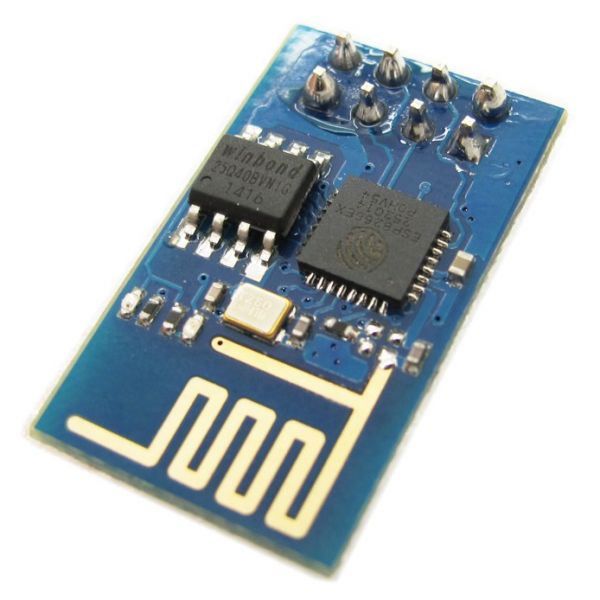

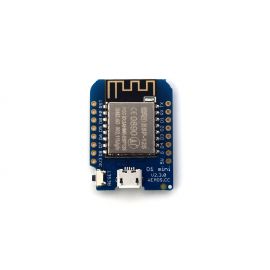
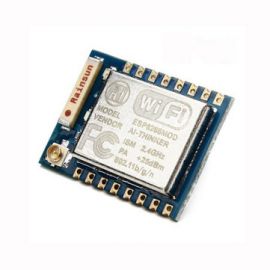
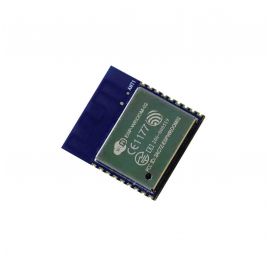
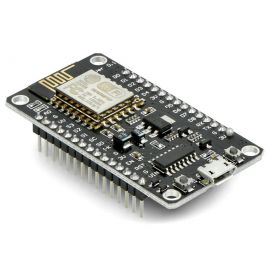
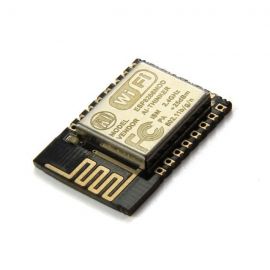
Log In